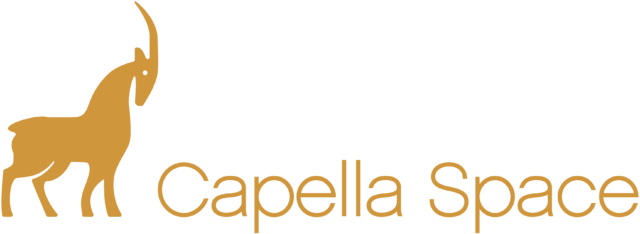By Payam Banazadeh, Founder and CEO
Our Vision for Ubiquitous Data
At Capella Space, we have a mission: To deliver hourly monitoring of any place on Earth, day and night, regardless of weather or environmental conditions. We launched the company in 2016 with an ambitious vision to build the world’s largest commercial radar satellite constellation which would provide this awesome capability to a vast audience around the world. We want to make more data available to more people, because we truly believe that democratizing the power of persistent Earth observation will enable a new class of applications, enhance transparency across the globe, and ultimately make our world a better place.
Back then we believed the only way to realize this dream was to ensure our satellites were as small and low cost as possible. We knew that larger satellites increased manufacturing and launch costs, requiring vast amounts of capital and increasing the difficulties of raising venture funding for such an endeavor.
With that knowledge, we paved the way forward to build and launch Denali, a very small, yet capable, microsatellite. Denali was a 48 kg synthetic aperture radar (SAR) satellite with an 8 square meter deployable SAR aperture. To fit all that into a small package, we had to invent a completely new deployable structure made of a thin Kapton membrane. The entire antenna weighed only 5 kg and had a compaction ratio of 1:100. Denali’s antenna was truly a novel innovation that took 2 years of hard work and a lot of investment to build, test, and deploy on orbit. At any other space company, this antenna would have taken 5-6 years to build. Our deployable structures group, and our lean technology development methodologies, made it possible to rapidly build Denali with limited capital.
After a 12-month launch delay of the rideshare mission we had booked, Denali was launched into orbit on Dec 3rd 2018. For businesses like ours, a delay of this length can be devastating, and it could have crippled our business. It did not. However, the delay did impact our original plan which was to launch Denali a year earlier, test, learn, iterate, and launch a follow-up mission in 2018. The launch delay meant that only one spacecraft—Denali—could be launched in 2018.
Understanding the Market
Between the start of the company in 2016 to 2018, the space industry and the SAR market in general experienced many changes. For Capella, we validated our market assumptions, grew our business team, and began building strong customer relationships critical for generating revenue and scaling growth. Our team travelled across the globe meeting with commercial users, government stakeholders, application developers, and non-governmental organizations (NGOs), and our understanding of customer needs expanded and sharpened. The message was clear: customers want high quality, high resolution data, in a timely fashion with high revisit times. In other words, the market was demanding a high performance solution that was either inaccessible or didn’t exist.
In late 2018 and immediately after the successful launch of Denali, we realized that the market needs were becoming increasingly sophisticated and had evolved and, with that, we must evolve our technology as well. The performance of our satellites— in terms of resolution and quality— must be improved even further to meet the requirements of the discerning customers and the sophisticated market we intend to serve.
Technology in Service to the Market
In SAR, there are a few key metrics that define performance of the system. First, and not surprisingly, resolution is an important measure. Sub-meter resolution is considered a “must have,” but there is more. Second, and equally important in SAR, is a measure called “Noise Equivalent Sigma Zero” (NESZ) – a complex measure akin to signal-to-noise ratio. Low-NESZ imagery is desirable because objects that scatter radar signals weakly are visible in low-NESZ SAR images, but high resolution and low NESZ are not the only factors that foster interpretation and detection in SAR images. The third measure involves speckle. SAR imaging generates speckle in images, which looks like the snowy noise found on old analog televisions sets. Speckle makes it harder to distinguish features in SAR images because it reduces the contrast between objects. Overcoming speckle is only possible by averaging multiple SAR images, or averaging pixels in a SAR image. This averaging process is commonly referred to as “multilooking.” Thus, interpretability in SAR images is determined by a complex mix of resolution, NESZ (signal to noise ratio), and multilooking. These factors are key but are often overlooked in common discourse surrounding SAR, and as a result, novice SAR users may mistakenly evaluate the performance of a SAR system based on antenna size and transmitted power alone.
Finally, in terms of performance, even the best image in the world is of little value to customers if the order process is arduous, the tasking request is bumped by a higher value customer, or the image isn’t delivered on time when they need it most.
Guided by our market discoveries and user demands, we defined the Capella product: We will provide very high resolution, low noise, high quality data in a timely and predictable manner, with an exceptional user experience. We are going to go for a home run!
This more demanding product definition necessitated the difficult decision to evolve Denali to dramatically improve its performance and, at the same time, significantly invest in building the systems to make tasking and delivery fast, frictionless, and easy. We decided to build a product that truly excites the market—enabling customers to replace some of their existing imagery sources with Capella’s and making SAR easier to use, more reliable, and cheaper to acquire than is possible today. We analyzed the competitive landscape and understood that if our entrance to the market wasn’t strong with high resolution, high quality imagery, others would fill the need. Or worse, frustrated by poor product quality or lackluster execution, the market might write-off SAR all together.
From Denali’s evolution, Sequoia was born—Capella’s next satellite design with impressive new features that we deliberately added to address very specific end user needs. Our near-real-time GEO link (using Inmarsat) allows us to retask the constellation within minutes and dramatically shortens the time it takes to transmit a request to the satellite and deliver imagery to the customer. The addition of a second star tracker and significantly larger reaction wheels delivers increased agility for the satellite and very precise pointing knowledge. This allows Sequoia to acquire a more diverse set of Areas of Interest (AOIs) quicker, thus providing a greater variety of imaging opportunities to our customers. The size of the solar arrays have been doubled, increasing the total imaging duty cycle to an average of 10 minutes per orbit. Our data downlink also received an upgrade to an average of 1.2 Gbps, delivering massive data volume to the ground quickly. But our most important upgrade was made to our SAR payload, increasing our nominal antenna gain from 42 dB to 48 dB coupled with a high peak power output. This combination provides the awesome capability our customers are demanding.
Implementing all of these improvements, however, did require making difficult choices. We delayed commencement of service by 8 months to complete and validate Sequoia’s evolved design. The satellite also doubled in size, increasing from 48 kg to 100 kg. Yet despite these choices, we are thrilled with the outcome—a world-class SAR satellite that delivers what our customers need and expect.

Throughout all of 2019 and to this day, Denali has been on-orbit, providing vital data to our engineering team. In addition to validating key hardware and software on-orbit, Denali has been invaluable for our Operations team, which has been using Denali as an internal development tool to build out our completely automated ground infrastructure tools for operating, tasking, downlinking, processing, storing, and delivering our products. Essentially, Denali is our third and in-situ R&D office in space, and we have been using it to its fullest extent. While a satellite is the most prominent and often cited piece of the puzzle, one cannot understate the importance of the ground infrastructure required to successfully operate such a system. Scheduling ground contacts autonomously, planning for collection opportunities, working through system features and anomalies, interacting with regulatory bodies – are just a short list of challenges for which we must plan, exercise, and overcome. Denali has enabled us to build a system ready for operation when Sequoia is launched.
Finally, through many conversations with end users and partners, we heard that service levels— reliability, timeliness, latency, and reactivity—from imagery providers have suffered from a lack of prioritization. We intend to change that. It’s clear that there is a compelling opportunity to improve the customer experience, and our customers will reap the benefits of Capella’s differentiated, highly competitive product solutions. It is built into our core values to provide not only a high quality image product, but to do so in a reliable, timely manner deploying technology and people for an exceptional customer experience.
To achieve this, Capella is completely automating our entire operations, from tasking satellites to delivering imagery to customers. Over the last 12 months we invested heavily in building our automated scheduler, along with a fully built-out API and web application (The Console). The Console allows our customers to request a product from our system without involving a human operator. No more emails. No more disk drives in the mail. No more midnight phone calls. This is a tremendous advancement! This means Capella can confirm customer orders within a few minutes, provide alternatives if the order can’t be accepted, and with our real-time-tasking through our exclusive partnership with Inmarsat, have the order collected and delivered to customers within 90 minutes or less. This is leapfrogging the entire industry and brings SAR imaging from space into a completely new era.

Since Capella’s inception in 2016, we have invested time and energy in listening to our customers and partners and, as with our satellites, we have evolved. A lot changed for Capella in 2019—we have transformed our organization, evolved our technology, and secured full funding to deploy 7 satellites in 2020, which is well underway. If what we are working to achieve excites you, please reach out to us at www.capellaspace.com/contact. We would love to hear from you.

